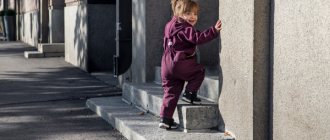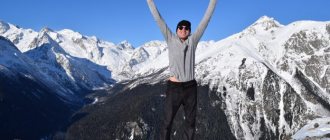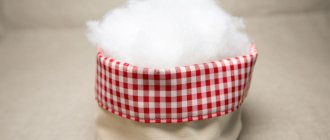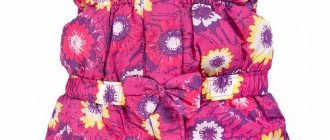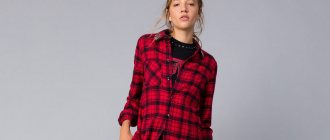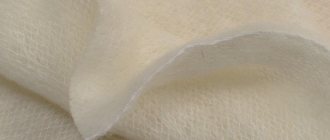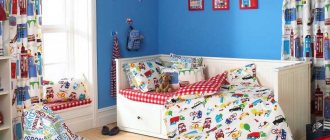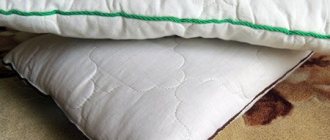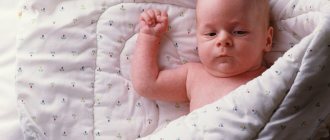Modern warm children's clothing is often sewn using synthetic insulation. Among the artificial insulation materials widely used are: holofiber, Thinsulate, Isosoft, synthetic winterizer, shelter, polyester, synthetic down. Natural insulation materials are also still popular. Children's clothing is insulated with natural down, batting, fur, and often sheepskin.
Insulation for children's clothing does not heat, it retains the heat emitted by the body, removes excess heat, creates a dry microclimate under the clothes, allowing the body to breathe and not sweat. Outer fabric protects from wind and rain.
Artificial insulation is hypoallergenic and does not harbor mites. On the other hand, in clothes with natural insulation, a child sweats less. From my own experience, I can say that branded clothing is good, regardless of the type of insulation. Properly selected in size, it is comfortable and functional. Children's clothing is made from environmentally friendly materials using safe impregnations and dyes. It makes sense to choose insulation not by name, but by its properties: natural or artificial, thin or thick, lighter, for a regular walk or for sports activities. At the same time, insulated clothing will pay off if all other clothing and shoes are selected according to the weather and walking style.
Quick jump to sections:
| padding polyester | Thinsulate | batting |
| holofiber | thermolight | fluff, feather |
| isosoft | shelter | wool, sheepskin, fur |
| synthetic fluff | ||
| polyester | ||
| thermophile, holofan, holofyll, fiberskin, fibertek, polyfiber | ||
| u-two | ||
| freudenberg | ||
Under modern outerwear with natural insulation (down, wool), we wear a T-shirt and a thin cotton blouse with long sleeves. In cold weather (winter, spring or autumn) we wear a T-shirt and a cotton turtleneck.
For children's outerwear with artificial insulation (polyester), we recommend wearing clothes with a mixture of synthetics, fleece and acrylic. In colder weather, you can wear a thin woolen blouse. Overalls and jackets intended for active walks and sports are worn only in combination with thermal underwear, and in cold weather we additionally wear a fleece blouse. As a last resort, they should be combined with synthetic and woolen clothing that does not absorb sweat, then the child will not freeze.
Insulation: synthetic winterizer. Children's clothing: overalls and jackets with padding polyester
Sintepon is a long-known non-woven insulation material. It consists of small, dense polyester fibers laid in even layers and bonded under high temperature or glue (emulsion). Fibers joined by adhesive form a thicker padding polyester, which retains heat better under clothing, but also allows moisture to pass through better (it loses its properties more after washing) than when the fibers are thermally joined. Thermal bonding produces denser insulation from straighter fibers. Sintepon insulation is mainly used for demi-season children's clothing, but can be used for winter clothing intended for temperatures above -15°C. This is the simplest of synthetic winterizers and the least breathable. It is used in budget clothing models, as well as for thickening children's jackets and overalls so that it does not hurt the baby to fall. Unfortunately, after several washes, synthetic winterizer significantly loses its ability to insulate clothes. Therefore, it is better to buy overalls and other clothes made with synthetic padding for one season, wash them once or twice, wiping the outer fabric with a damp cloth. Over time, the threads of the padding polyester peel off and come out through the lining. Low-quality padding polyester may contain toxic glue that holds the polyester fibers together.
Modern insulation based on padding polyester is made of hollow polyester fibers, which are laid in layers that adhere to each other. New technology has made it possible to make insulation for children's clothing that retains heat better. The density of the insulation can be different: 50-600 g/m2, less dense material is laid in several layers. For winter in Central Russia, padding polyester with a density of 300 g/m2 or several layers of less dense padding polyester is sufficient; for demi-season clothing, padding polyester with a density of 100-200 g/m2 is used. Branded children's clothing contains the required amount of insulation and is designed for a certain temperature and weather conditions, which is usually indicated on the clothing label or on the manufacturer's website. Modern synthetic padding can be washed (but without soaking and without bleaching), and it will retain its properties. The label sewn into the imported product says “polyester” or “waltern”. As a rule, demi-season clothes are sewn on padding polyester, because... Sintepon as clothing insulation is designed for temperatures from +12°C to -5 - -8°C.
U-two is a modern insulation material for Russian U-two children's overalls. Own trade name of insulation. The material is made on the basis of padding polyester hollow fibers. The insulation is softer, can be washed multiple times, and retains heat well.
Freudenberg insulation is also made on the principle of synthetic padding from hollower polyester fibers, which do not fit so tightly to each other. Due to its structure, this clothing insulation is lighter, it retains its shape better and retains heat.
Holofiber material: characteristics. Is it possible to wash holofiber? Holofiber for children
Holofiber is a popular insulation material for children's clothing (winter and demi-season jackets and overalls, envelopes), a filler for toys, blankets, and pillows. The name translates as “hollow fiber”. Hollofiber for insulating children's outerwear is twisted hollow polyester fibers in the form of a non-woven fabric. For filling, the material is produced in the form of individual small elastic balls or oblong lumps twisted from polyester fibers. Holofiber insulation has high heat-protective qualities, it is lightweight, antistatic, non-flammable, quite voluminous, it does not allow air to pass through well, but this is compensated by the breathable cotton lining.
After compression or washing, the insulation regains its shape and does not shrink or crumple. You can wash clothes insulated with holofiber. After washing, the insulation retains its qualities. Produced in Russia. Winter overalls made of holofiber are designed for temperatures from -5°C to -25 - -30°C. Some manufacturers guarantee heat retention for up to 2 hours even at -40°C. At the same time, the density of the insulation is only 100-150 g/m2, twice as thin as that of padding polyester and, accordingly, twice as light.
Hollow fiber allows you to feel comfortable in outerwear, even if you find yourself briefly in a store, in transport, in any warm room up to +20°C, and without sweating.
Modern artificial insulation materials for children's clothing also include thermofil, holophane, holofyll, fiberskin, fibertek, polyfiber . The materials contain polyester, produced using a special technology. Hollow insulation fibers are twisted into small balls or spirals. Insulation in the form of balls, as a rule, is 20% more voluminous than insulation in the form of spirals. Some insulation materials consist of two types of materials, and then they also receive their own trade name. The insulation evenly fills the inner space of the clothing. The label sewn into the product indicates “100% polyester”, “polyester” or “waltern”. Each of these insulation materials is lightweight, soft, retains heat well, does not absorb moisture, and can withstand washing without loss of insulation quality. Children's clothing with these insulation materials is designed for temperatures from -5°C to -25 - 30°C.
Disadvantages of holofiber
Many people take the process of buying winter clothing such as a jacket very seriously. Hollow fiber or down is the personal preference of each consumer. It should be noted that a down product can cause allergic reactions in a small child or an adult, so jackets with such filling are not suitable for everyone.
The only drawback of holofiber can be identified - the manufacturer’s promise that outerwear will not accumulate static electricity.
Synthetic insulation for children's clothing
Synthetic fluff is an artificial substitute for natural fluff. The insulation is produced in Russia and Ukraine from South Korean polyester fiber. The material is a hollow spiral-shaped polyester fiber treated with silicone emulsion, due to this the fibers do not stick to each other, and the synthetic fluff retains its shape. The fibers are woven into fluffy, elastic threads. The insulation is used in children's clothing and is white. Synthetic fluff is also used as a filler. Synthetic fluff is hypoallergenic, it rejects foreign odors. The material is light, durable, quite voluminous, reliably retains heat, has acceptable breathability, and can be washed. Synthetic fluff dries relatively quickly. Due to its softness and fluffiness, synthetic down is similar to natural down without touch and in some qualities.
What is isosoft insulation? Children's clothing on isosoft
Isosoft insulation is lightweight and breathable. The material is the finest fibers with a cellular polyester structure, which retains heat well under clothing. Children's clothing made with isosoft has a fairly thin layer of insulation, and it is quite enough. The insulation is produced in Belgium. Isosoft is not afraid of washing in warm water, without bleach. Dries quickly. You can dry clothes on isosoft in a vertical position, preferably on a hanger. Children's clothing with isosoft insulation is designed for temperatures from 0°C to -30°C. The advantage of isosoft insulation is the ability to enter a warm room for a short time in outerwear and not sweat, which is important in active city life. The insulation ensures good breathability of clothing.
Disadvantages of down filling
To fully determine what is warmer – down or holofiber, you also need to learn about the disadvantages of products made from natural materials. Every person should remember that when choosing outerwear for the cold season, one must take into account whose feather was used.
The best option is a goose. Unscrupulous manufacturers may produce jackets made from chicken feathers, which are incredibly brittle and do not provide the necessary volume to retain heat.
The main disadvantages of down and feathers can be identified:
- difficulties during washing (it is best to take such clothes to dry cleaning);
- the likelihood of an allergic reaction;
- fluff is a favorable environment for the reproduction of a large number of mites.
Polyester insulation. Polyester fiber
Polyester is called polyester because it is made up of polyester fibers. The name “polyester” is also used for materials used in the sewing of special protective clothing designed to protect against oil and acid, from low temperatures, from moisture, as well as signal clothing. Such materials are toxic and are never used in the production of children's clothing. Polyester, which is used as a fabric for children's clothing, is a safe, environmentally friendly polyester. The name “polyester” is used as insulation for children’s outerwear by Polish manufacturers.
Polyester is a safe insulation made from polyester. The material is a canvas made of polyester fibers. Polyester is light, voluminous, and retains heat well. Children's clothing made from polyester can be washed and will retain its shape. The insulation dries quickly.
Positive properties and qualities of holofiber
Products made from this material can serve their owner for quite a long time.
Holofiber is an absolutely non-toxic material, so it will not cause allergies in people. It also does not absorb various odors from the environment. The products are not flammable, so when choosing, consumers prefer material such as holofiber. Reviews from people who have worn outerwear with this filling are most often positive and recommendatory. When wearing a product based on holofiber, you don’t have to worry about it getting wrinkled or losing its neat appearance, since this material always returns to its shape. In especially cold months, such a filler will retain heat perfectly.
Thinsulate: characteristics. Insulation for children's clothing Thinsulate
Thinsulate is a modern premium microfiber insulation for sportswear and children's clothing for active walks. The material consists of very thin fibers with a diameter of several microns, around each fiber there is an air layer. For this reason, Thinsulate insulation is called artificial down. Thinsulate fibers are much thinner than the fibers of other insulation materials, due to this it retains heat better under clothing. The material can have different thicknesses or be laid in several layers. Thinsulate clothing is warm, light, breathable, and quite thin. Children's winter clothes with thinsulate can be worn in frosts down to -30 - 40°C. Thinsulate insulation retains its qualities both after washing and dry cleaning.
Thermolite is a synthetic insulation material for sportswear from DuPont. Thermolite consists of three types of polyester fibers: the material is based on microscopic fibers, denser fibers are glued to them, and hollow fibers are located on top. This structure ensures the preservation of a pleasant microclimate under clothing, lightness and sufficient thinness of the insulation. Thermolite tolerates washing well in water, does not wrinkle, and dries very quickly.
Natural down insulation. Down-filled children's clothing
Natural down or feather can be goose, swan, or eider. Eider and swan down are valued higher. Duck down retains heat worse than others, so it is used only for fillers and budget demi-season clothing. If the insulation is 100% down, then this is indicated on the label sewn into the Russian product, but on imported clothing it is indicated “down”. Pure down insulation for clothing has one of the highest levels of thermal conservation. Down lasts longer and retains heat better than a mixture of down and feathers. “Feather” insulation means a mixture of down and feathers, which is more often found in children's clothing. Down and feathers are also used as fillers. Children's winter clothes with down are comfortable to wear at temperatures of -10 - -35°C; in calm weather and -5 - -10°C, down jackets are good only for quiet walks. Down clothing is soft, light, quite bulky, and can be washed (without bleach).
It is better to wash children's down clothes only as needed so that they last longer, at least three to four seasons. We recommend drying a down jacket or overalls in a horizontal position; it dries in one or two days, but you can finish drying it in a vertical position. It is best to dry down clothes in the dryer on a gentle setting. After drying, the fluff will remain crumpled, so it is better to shake the product thoroughly. The fluff will finally straighten out when the child in down clothes goes outside, it takes literally 2-3 minutes. It is clear that you should not go out in a washed down jacket on a frosty, windy day immediately after an illness.
Children's down clothing has a fairly dense lining fabric (often synthetic rather than cotton), inside of which there is down or down-feather insulation. This lining may be impregnated, polyurethane or other, which does not allow the insulation to pass through, and as a result the clothing does not breathe well. Pay attention to how easily and how much down and feathers come out when actively creasing the down jacket. In children's down clothing of good quality, feathers and down should come out, but in very small quantities. The feather that is part of the insulation of children's clothing should be small with thin rods. In budget clothing, the insulation contains large feathers, cut into small pieces. The size of the feathers is easy to determine by touch through the lining.
It is better to store down clothes in a breathable cover. When used for several years, at high humidity, down clothes can harbor mites and cause an allergic reaction in the child in the form of sneezing. Drying the product in the hot summer sun helps prevent the appearance of ticks. Therefore, it is better to buy only new children's down clothes.
How to ensure proper care?
With prolonged use, any item becomes dirty and loses its attractive appearance. The significant advantages of products with holofiber are that they are easy to wash in any conditions, and they dry quickly. However, despite its simplicity, home care requires certain rules, without knowing which, you can, if not spoil your favorite thing, then cause yourself additional trouble.
How to wash a jacket or down jacket
Most often you have to wash a jacket or down jacket. Before washing (or even better before purchasing), you need to carefully study the description of the materials, their composition and the rules for caring for them. Remember that the characteristics of the washing mode are selected based on the material of the top. Holofiber easily tolerates gentle machine washing. To do this, use a liquid detergent rather than a fiber-penetrating powder. Instead of wrung out, the washed product can be hung on hangers over the bathtub. If you wash your jacket in the evening, it will be dry by morning.
How to wash a pillow and blanket
It is recommended to wash pillows and blankets once a year; children's accessories need to be tidied up more often. The easiest way to wash a holofiber pillow is as follows:
- Pour water at a temperature of no more than 30 degrees into a deep container and dilute a soft liquid laundry composition or neutral shampoo in it;
- The pillow with the pillowcase removed is immersed in water and left for half an hour, then gently wrung out and rinsed in running water;
- To dry, the pillow is placed horizontally, preferably on a wire rack with constant air circulation. It needs to be shaken periodically until it dries completely.
You can wash blankets and other items in the same way. If for some reason the holofiber becomes matted, then it is recommended to wash it in the machine along with tennis balls. The matted pillow needs to be ripped apart, the filling taken out and combed out with a comb or slicker.
Batting insulation for children's clothing
Batting is an almost natural half-wool insulation material, often labeled “wool” or “wool” on the label.
The material consists of half-wool, synthetic or cotton fiber. Batting is produced by processing wool or cotton yarn, wool production waste, textile scraps, and environmentally friendly chemical fibers. Batting can contain from 20 to 100% wool, also up to 50% cotton and up to 80% synthetics. To insulate children's clothing, batting, consisting mainly of wool, is used; In branded clothing, good quality batting is used: the composition includes some natural fibers, and some obtained as a result of processing. Batting is a non-woven material that is a quilted fabric. The batting is soft, dense, warm, hypoallergenic. Children's fur coats and woolen winter coats are usually insulated with batting. Batting can also serve as an independent insulation for demi-season children's outerwear, vests, and sweatshirts.
